On the 25th of December 2021, The James Webb Space Telescope (JWST) set sail from the European Space Agency’s (ESA) launch site at Kourou in French Guiana, beginning a historic program that took nearly 20 years of immense hard work and ambition to complete and 10 billion dollars worth of capital. The JWST is a collaborative program led by the National Aeronautics and Space Administration (NASA) with the European Space Agency (ESA) and the Canadian Space Agency (CSA), intended to succeed NASA-ESA’s Hubble Space Telescope.

Mission and Goal
With an emphasis on the near-Infrared and mid-Infrared regions (in contrast to Hubble’s Ultraviolet, Visible and near Infrared wavelengths), the James Webb Space Telescope would be able to detect and observe redshifted light from the very first galaxies formed after the big bang which are much distant and old (nearly 13.5 billion years). It will compare them with today’s elliptical and spiral galaxies to understand how galaxies assemble and develop over billions of years. The JWST also plans to study the formation of stars and its protoplanetary system and aims to study exoplanets (planets outside the solar system), their constituent elements, atmosphere etc through the near and mid-infrared light, which is transparent to giant nebulae (interstellar clouds of dust).
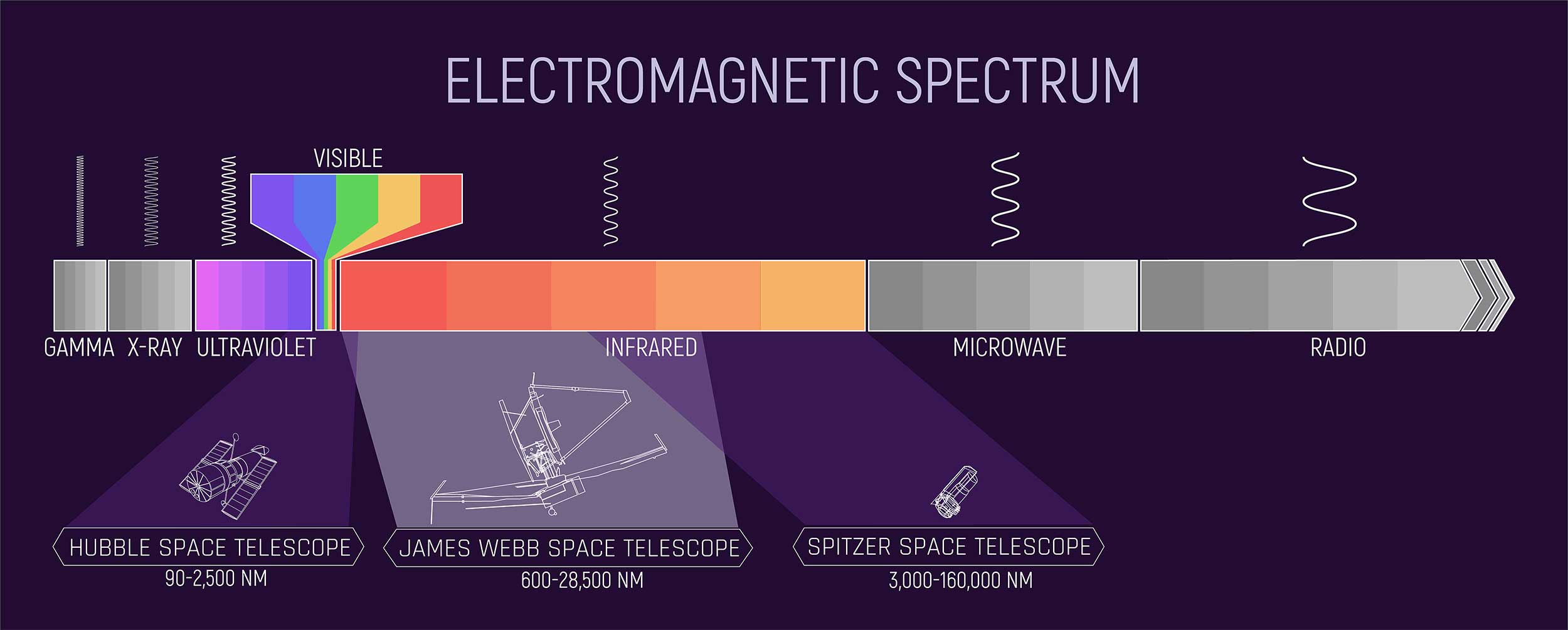
Facts and the On-board Technology
The primary mirror is divided into 18 segments for its ease of launch outside the Earth’s atmosphere. Each segment is made of beryllium and is gold-plated (due to its high reflecting property). The total light receiving area of the telescope is 25sq. metres, about six times that of Hubble and possesses nearly half the mass that Hubble did.
Since JWST operates mainly in the Infrared region, the telescope must be kept extremely cold (billow 50K) to ensure that its own infrared radiation do not affect the observations. Thanks to the infrared technology, JWST would be able to detect objects 100 times fainter and much more distant than Hubble’s capability.
The telescope is situated at the Second Lagrange point (L2) in the Earth-Sun system. This placement ensures that the Sun is always behind its field of view (Read more about Lagrange Points).
The telescope houses a five-layer sun shield, each layer being as thin as a human hair, with membranes specially coated with aluminium on both sides and a layer of doped silicon on the Sun-facing side of the two hottest layers to reflect the Sun’s heat back into space.
The instruments aboard the JWST are as follows:
-
Near-Infrared Camera (NIRCam): The camera will operate in the near-infrared region and detect the earliest stars and galaxies in the process of formation, the population of stars in nearby galaxies, as well as young stars in the Milky Way and Kuiper Belt objects.
-
Near-Infrared Spectrograph (NIRSpec): The spectrometer would also operate in the Near-Infrared region and would study the properties such as composition, age, and temperature of an object.
-
Mid-Infrared Instrument (MIRI): The instrument contains a camera and a spectrograph and operates at an even longer wavelength in the mid-infrared region.
-
Fine Guidance Sensor/Near Infrared Imager and Slitless Spectrograph (FGS/NIRISS): The FGS allows Webb to point and focus precisely on the target. The NIRISS will help in light detection, exoplanet detection and its characterisation, and exoplanet transit spectrography.
Overview of the Images Released
-
SMACS 0732:
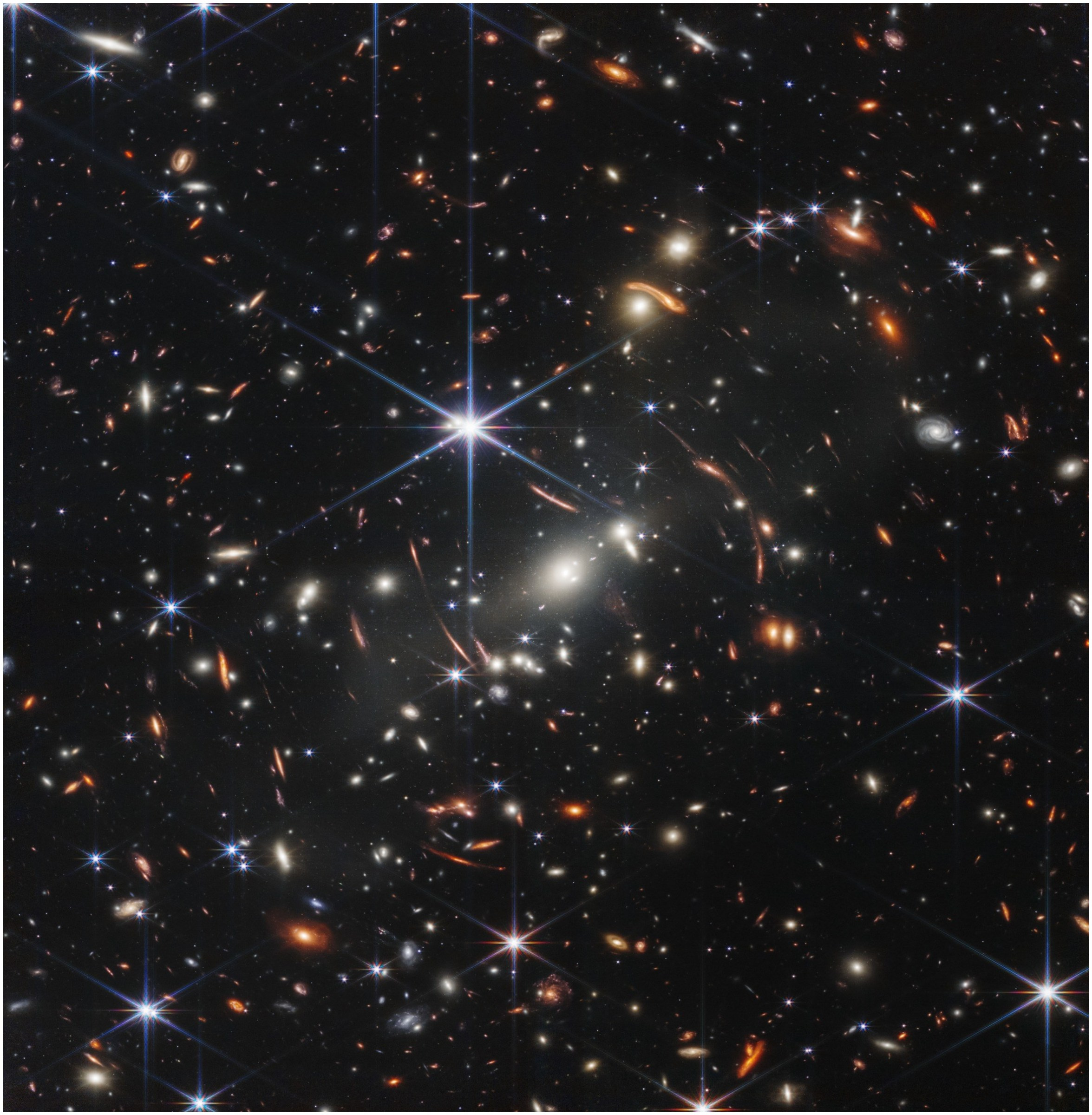
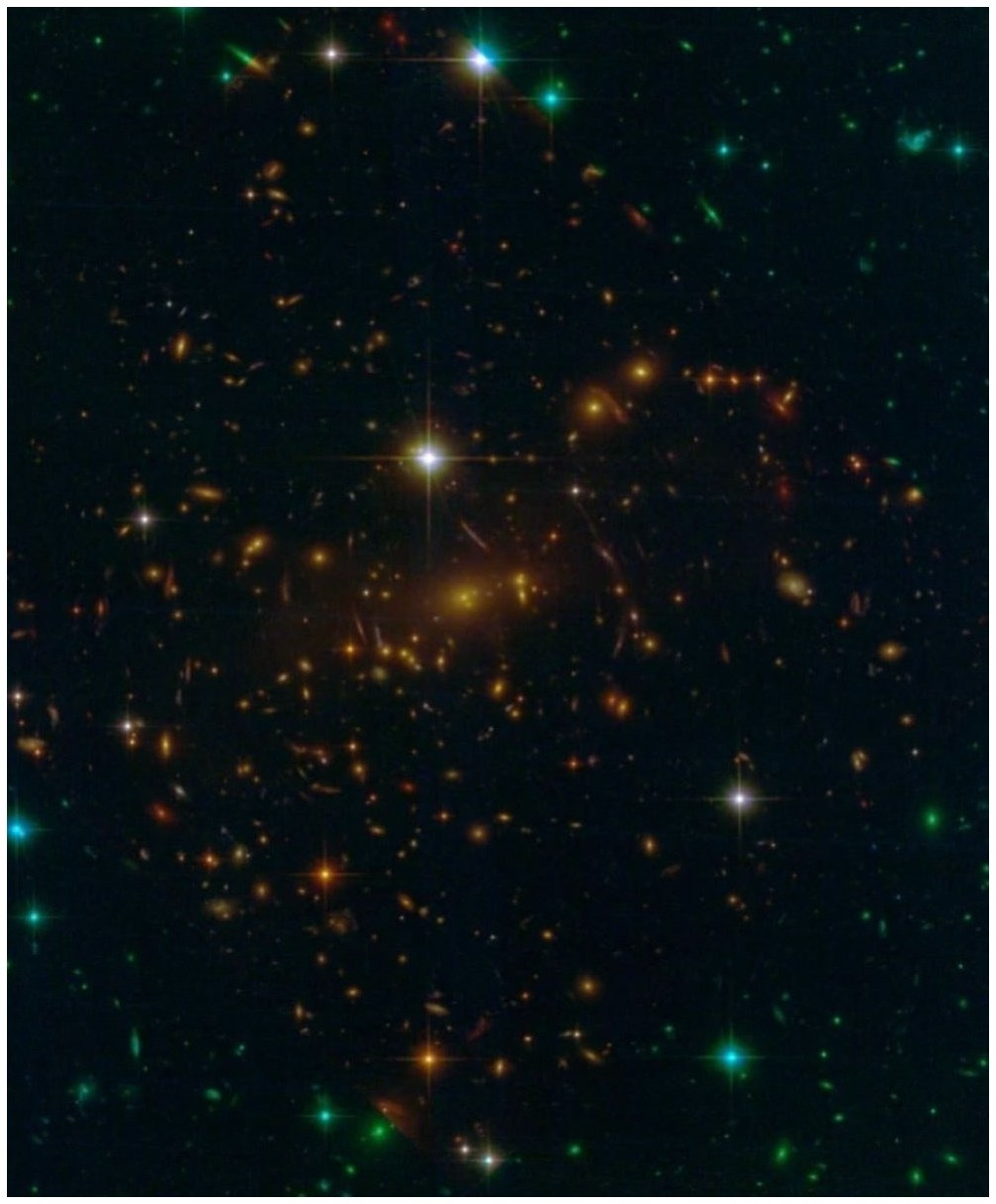
Left: Image from Webb; Right: Image from Hubble
The photograph taken by the NIRCam shows SMACS0732, a galactic cluster, light from which has to travel nearly 4.5 billion years to reach us. Due to its huge mass, the cluster acts as a gravitational lens and magnifies distant galaxies, and meets the expected results deduced through observations by the Hubble space telescope. The curved, much redshifted galaxies are nearly 11 to 12 light-years distant. One can also see intergalactic dust as bright spots in the photograph. Notice the 6 line diffraction pattern as compared to the 4 lines on a central star which is due to the telescope’s hexagonal build.
-
WASP-97 B:
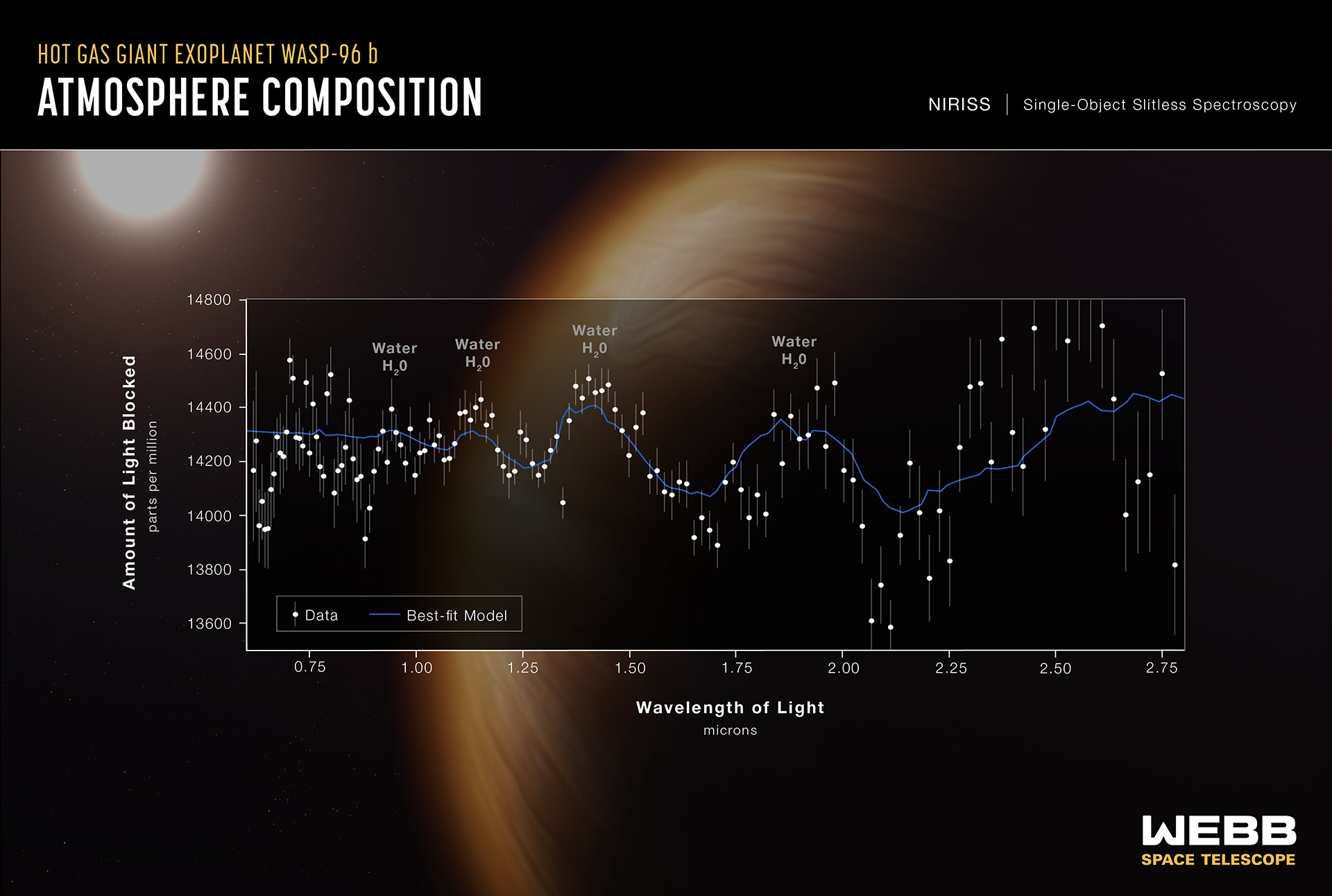
While analysing the atmosphere of WASP-97 B, a near Jupiter size exoplanet, much closer to its star (revolves completely in 2.1 days), the NIRISS, observing a particular blocked wavelength of infrared light in the received spectrum, revealed the presence of H2O molecules. The Hubble Space Telescope first discovered water on an exoplanet in 2013, while JWST delivered immediate observations with much greater detail.
How are exoplanets detected? Any exoplanet that orbits a star creates a dip in its continuous brightness pattern due to an eclipse-like situation. This dip is seen and observed by the telescope.
-
NGC 3132:
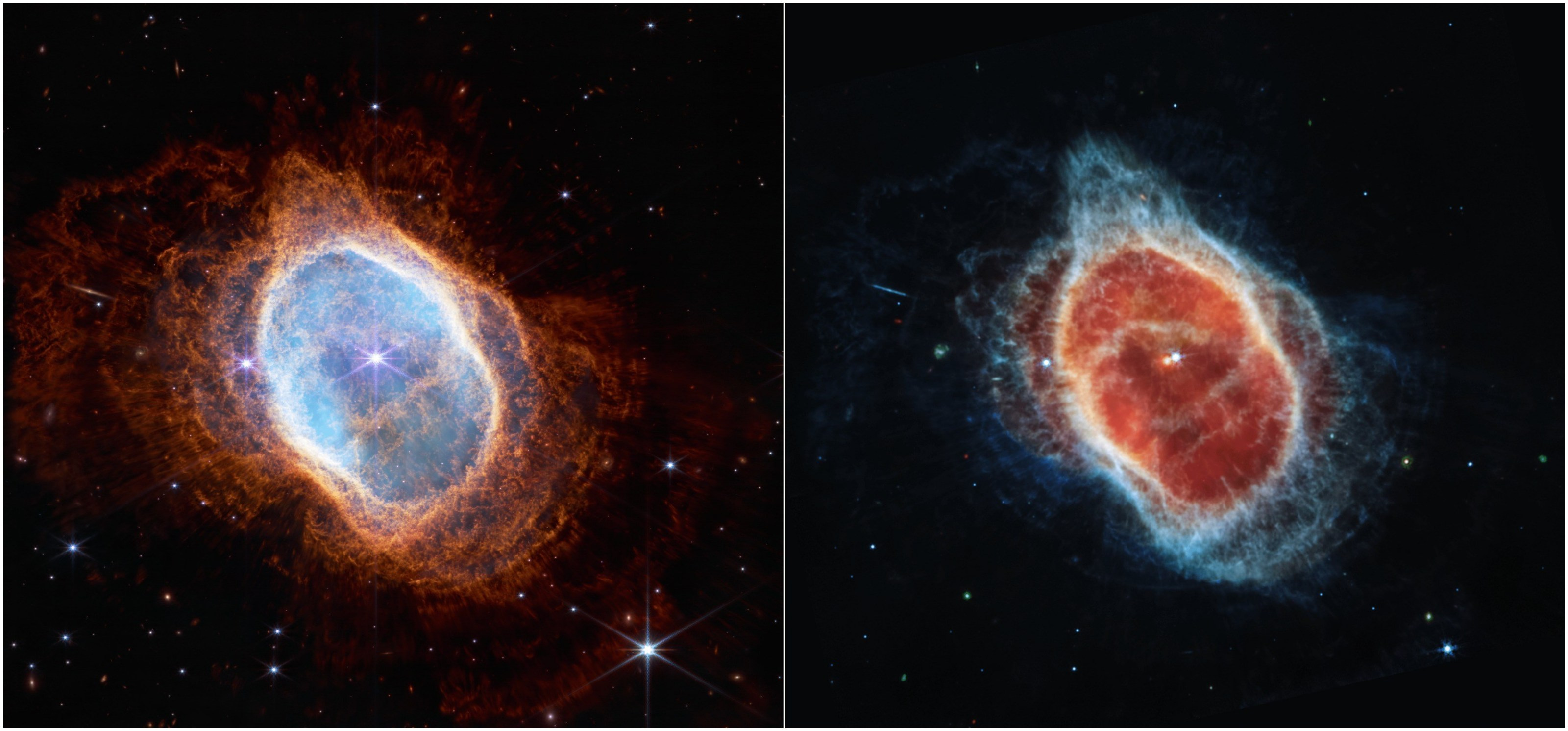
Left: Image from NIRCam; Right: Image from MIRI
The Southern Ring Nebula, catalogued as NGC 3132, is a planetary nebula, which is the remanence of a then sun-sized star which transformed into a white dwarf. The photograph on the left was captured by NIRCam and the one on the right by MIRI. The MIRI, which operates on even longer wavelengths, could skip past the cloud of dust which revealed a different star previously hidden because of the white dwarf’s luminance. The white lines result from the interaction between the dwarf and the star in the nebula.
-
Stephans Quintet:
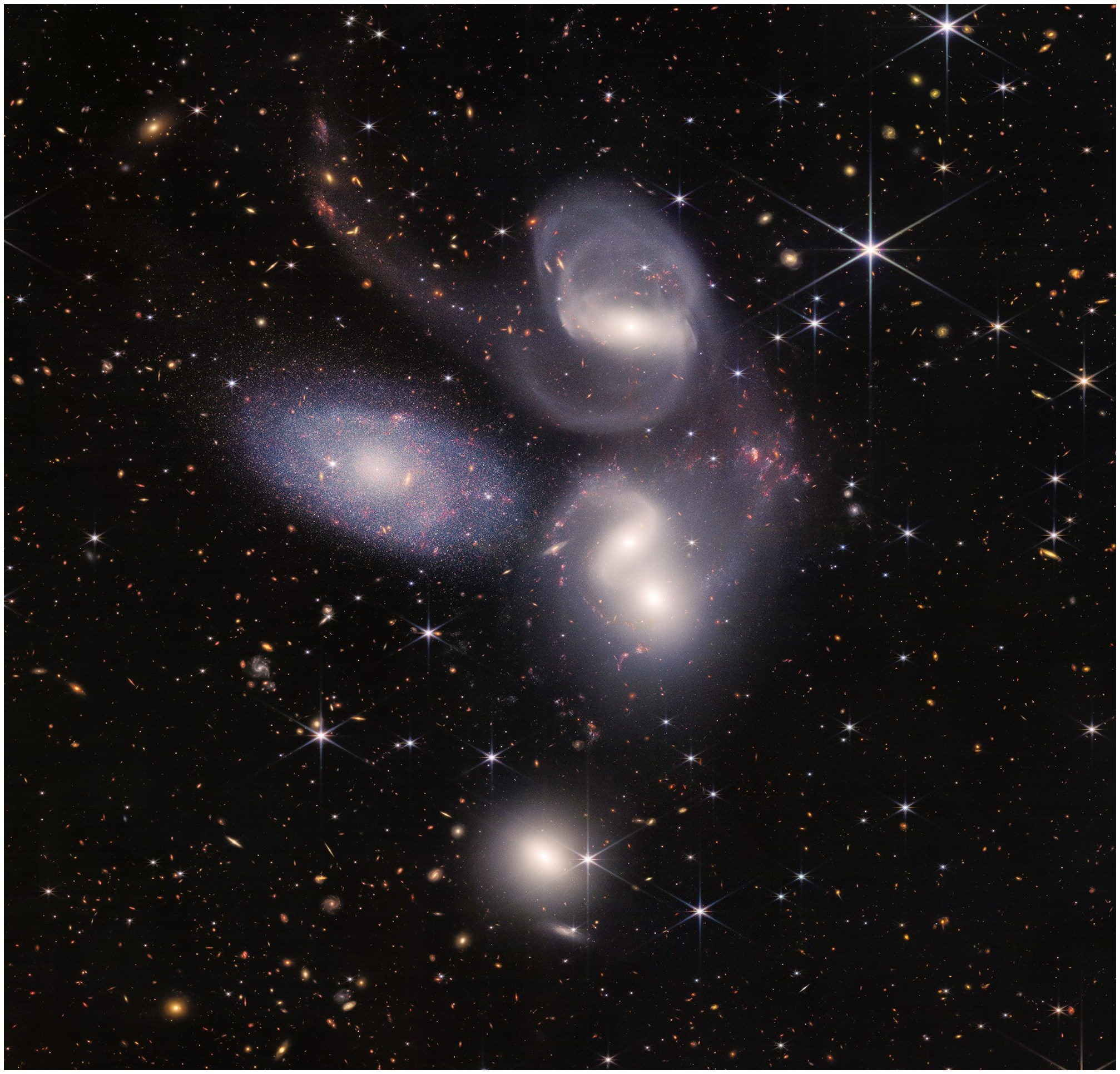
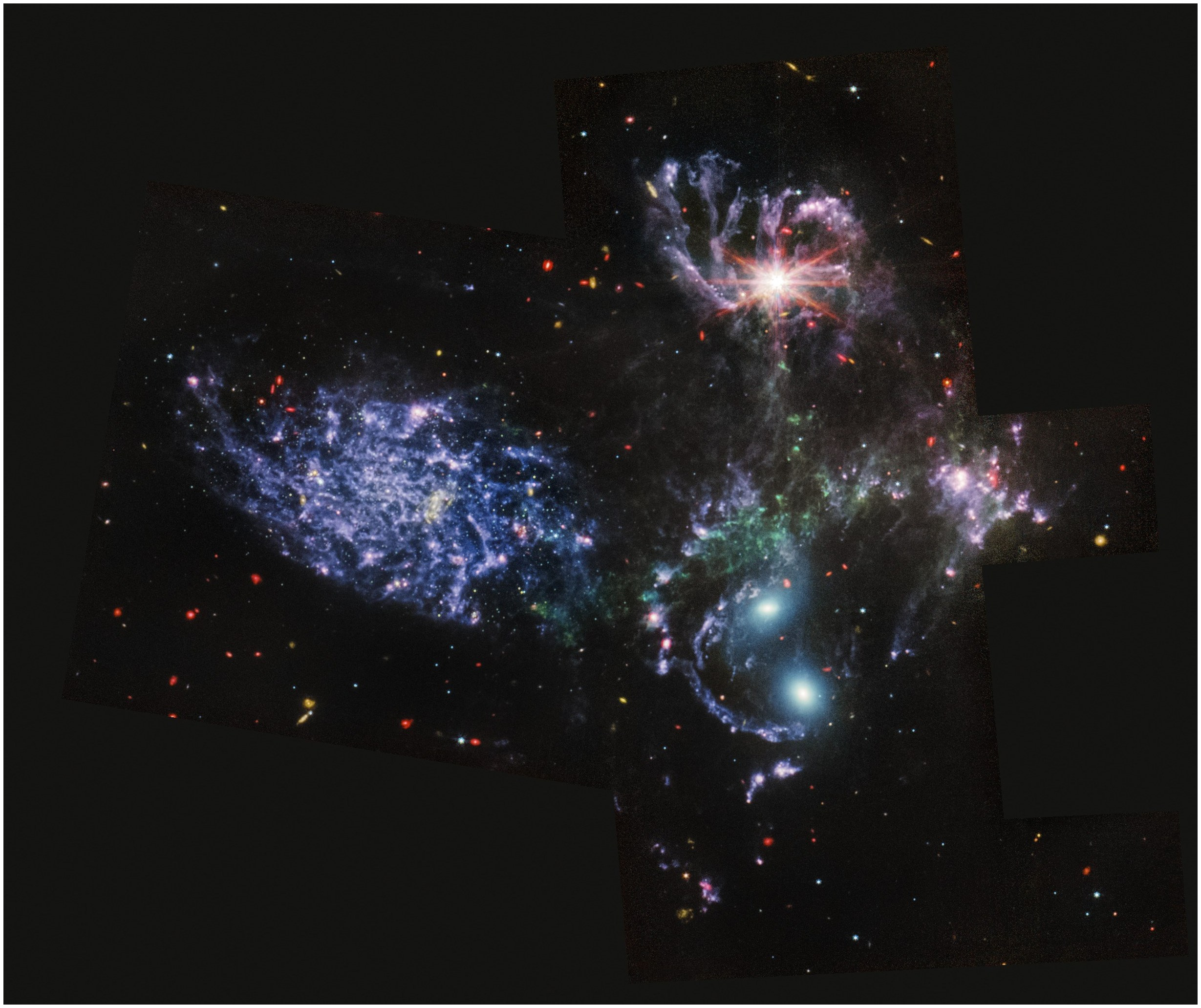
The Stephens Quintet is a cluster of 5 galaxies all interacting with each other. The composite image (left) shows the galaxies with greater detail (it is even possible to point out individual stars in the galaxies). The MIRI image, on the other hand, shows the galactic structure of the galaxies and puts the supermassive black hole (in the top galaxy) in the limelight. The NIRSpec and MIRI also conducted near and mid-infrared spectroscopy, revealing the gas composition around the black hole.
-
NGC 3324:
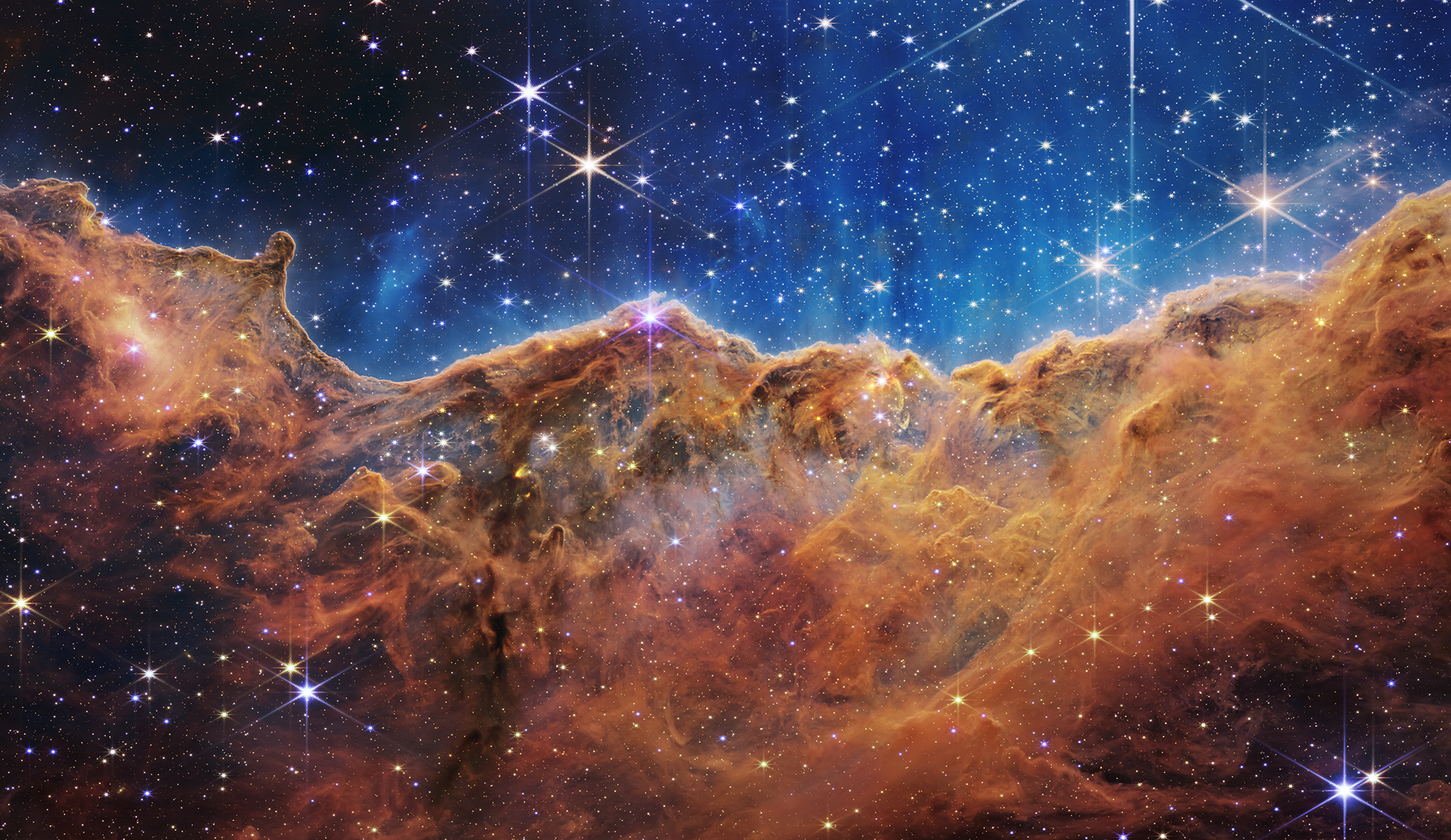
This glorious image of the edge of a star-forming region called the NGC3324 in the carina nebula was captured by the NRICam. These observations will aid in our understanding of star formations and their effects on these massive clouds of gas and dust.
-
Jupiter:
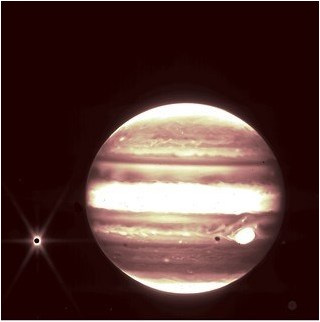
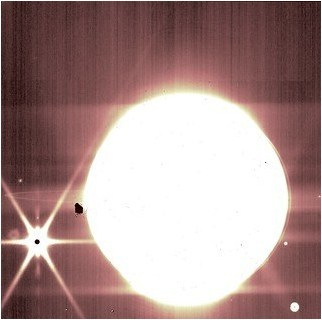
The NIRCam, using two different filters, also captured the red giant with great detail, including its faint ring, the red spot and Europa, its moon, which may have an ocean beneath its icy crust. The photograph also was a demonstration of JWST’s ability to observe objects in our solar system as well.
Future course of action
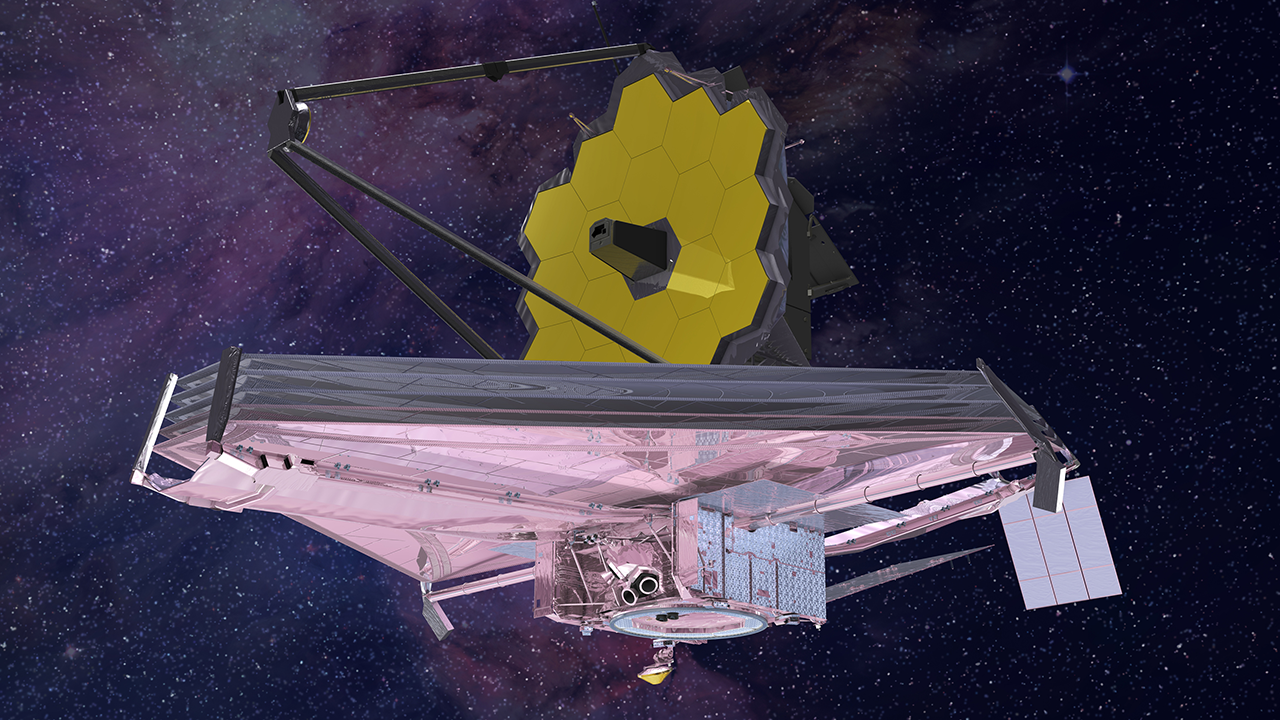
The Hubble Space Telescope would forever be considered one of the most significant astronomical programs which paved the way for countless observations and findings.
With its successful launch, precise alignment, proper calibration and exceptional first image results, the James Webb Space Telescope will initiate its science operations with the aim to build on the Hubble Space Telescope’s discoveries. The JWST possesses remarkable capabilities which hold great possibilities for significant scientific observations and discoveries; it will travel back in time to observe light coming from as far as 13.5 billion light years away, analyse the formation and development of galaxies, observe and study exoplanets and perhaps even find the building blocks to sustain life elsewhere in the universe!
References
[1] https://www.nasa.gov/webbfirstimages
[2] https://www.nasa.gov/mission_pages/webb/
[3] https://www.esa.int/Science_Exploration/Space_Science/Webb/(archive)/0